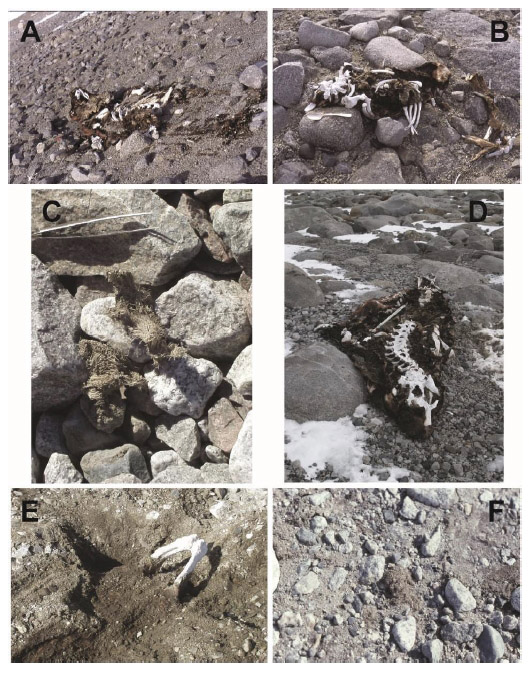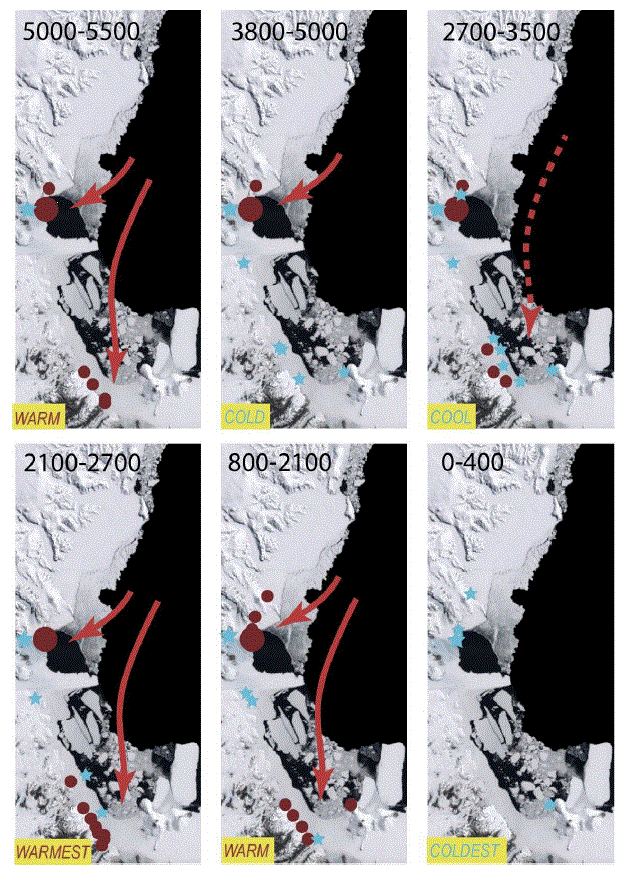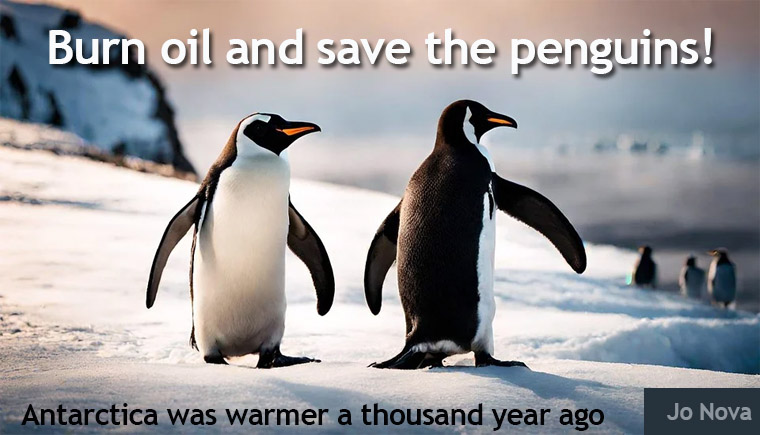Where are the tears? Elephant Seals and Penguins were forced off the Ross sea 1,000 years ago because it got too cold
One thousand years ago Southern Elephant Seals were happily living in the Ross Sea of Antarctica. Likewise Adelie Penguins frolicked in the sun there during the “Penguin Optimum” of three to four thousand years ago. They had lived there on and off for thousands of years in the Holocene, but the glaciers came back and the cold times returned, and all the colonies were wiped out. All that’s left there now is just their rotting bones and fur as testament to the devastation of Global Cooling.
Thanks to Kenneth Richard at NoTricksZone for his dedication in digging up these papers.

The Ross Sea is a part of Antarctica that is south of New Zealand, and in the pictures below the remains of the seals and penguins show that they had well established colonies in places where they are unable to live now. The red circles mark the seal colonies, and the blue stars show the penguins. The colonies ebbed and flowed but then were lost as the Little Ice Age began and have not recovered.

Today the beaches are an empty wasteland:
Today, the beaches are largely free of marine mammals and birds; skuas (Stercorarius maccormicki) are the most widespread species. Along the southern coast, penguins are absent, although small Adélie (Pygoscelis adeliae) rookeries existed in the past (i.e., Baroni and Orombelli, 1991, 1994a; Emslie et al., 2007). Adélies also occur adjacent to Terra Nova Bay at Adélie Cove and Inexpressible Island. Solitary or small groups of Weddell seals (Leptonychotes weddellii) occasionally haul out on the VLC. No other seals use these beaches at present.
The seals and penguins of Antarctica must be desperately hoping for some global warming so they can return to their ancestral homes and flourish where only desolate ice grips the sea and shore now. If only humans could do something about that!
Indeed, it’s time to launch a new campaign: “Fossil fuels can save the seals”. (It has just as much scientific validity as any eco-campaign running today, ask the IPCC!).
I don’t believe human emissions can warm the planet enough for the penguins to notice, but what if I’m wrong?
There really was a “Penguin Optimum” at about the same time as the Minoans and the Myceneans thrived. Bring back the warmth!
The red and yellow bars mark warmer eras where the marine mammals flourished. The diatom results marked in blue at the bottom (F. curta) of the graph below, show how sea ice expanded in the last thousand years as the cold made life impossible for the seals and penguins. The diatom results marked in red (T. antarctica) rise in the eras of longer warmer summers. The graph above runs “backwards” in time from right (the past) to left (present).

Fig. 7. Synthesis of Holocene climate records from the northern VLC discussed in the text. A. Age distribution of seal remains at Terra Nova Bay. B. Cadmium/phosphorus ratios of penguin guano at Inexpressible Island, inferred to be a proxy for the presence of modified circumpolar deepwater in Terra Nova Bay (Xie et al., 2021). C. Diatoms from a marine core at nearby Wood Bay (Fig. 1; Megzec et al., 2017), inferred to represent sea-ice extent (F. curta (blue) – high % = more sea ice) and summer temperature/duration (T. antarctica (red) – high % = warmer/longer summer). Green bar and arrow at the top of the figure denote the penguin optimum (Baroni and Orombelli, 1994) and decline of penguin rookeries at southern mainland locations. Red and yellow bands are from Fig. 6 and indicate times of relative warmth inferred from the elephant seals.
Tell the children, the world was warmer a thousand years ago, and the cooling has been a killer. If they like life on Earth, they want more warming, not more cooling. The world has been cooling for 5,000 years, and if we could warm the Earth that would be a good thing.
See these posts for references:
- Medieval Warm Period found in 120 proxies. Plus Roman era was similar to early 20th Century.
- Climate helped drive Vikings from Greenland
- The Medieval Warm Period hit west Antarctica
- Antarctica was warmer one thousand years ago — and life was OK
REFERENCE
Hall et al (2023) Widespread southern elephant seal occupation of the Victoria land coast implies a warmer-than-present Ross Sea in the mid-to-late Holocene, Quaternary Science Reviews, Volume 303, 1 March 2023, 107991
